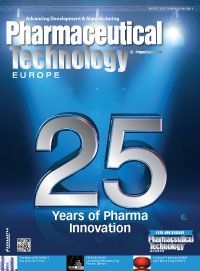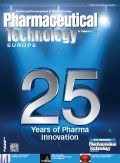Outsourcing Grows in Europe
Pharmaceutical Technology Europe
Eric Langer of BioPlan Associates describes the development of biopharmaceutical outsourcing in Europe over the past 25 years.

PTE: How has outsourcing changed or developed in the biopharmaceutical industry in the past 25 years in Europe?
Langer: Over the past 25 years, borders and location have become increasingly less important, relative to a supplier’s technical, client service and quality competence. In BioPlan Associates 11th Annual Report and Survey of Biopharmaceutical Manufacturing, we found, among 238 facilities, that the very last decision factor when considering outsourcing is location (only 7.3% noted this to be ‘very important’ this year versus 10.4% back in 2006). Essentially, biopharma outsourcing today has grown from routine activities such as simple testing, to a major, collaborative industry segment where a CMO partner’s expertise is necessary to the success of a particular campaign or product.
As a result of this technical specialisation, there is far more outsourcing being done, and many more CMOs/CROs. In 1989 there were only a few biopharmaceutical CMOs, particularly at any scale. Most of the biopharma drug developers had not started to outsource to CMOs. The concept of ‘vertical integration’ was far more common. Some companies purchased up- and downstream subsidiaries just to ensure they were sufficiently vertically integrated. This strategy generally didn’t pan out, as management of diverse subsidiaries became difficult, and integration into a smooth operation sometimes impossible.
European companies, in particular, often sought critical mass through acquisition. Ultimately, outsourcing, especially in bioprocessing, became more common as a result of the capacity crunch in the early 2000s. Drug innovator companies began to realise that giving up some of their core competencies did not reduce the overall value of their organisations. As a result, the industry, including CMOs, CROs and testing facilities, and their relationships with their clients have grown and matured over the past 25 years.

Pharmaceutical Technology Europe25th Anniversary Issue
PTE: Do European biopharma companies typically outsource to other European countries or outside of Europe, and has this changed over the past 25 years?
Langer: From this year’s 11th Annual Report, we find that Western European-based facilities, over the next five years, will plan to do their international outsourcing in the US and China, with Germany and the UK closely following. Although many will say they want their CMO to be ‘local’, survey results suggest that decision-makers are actually more interested in outsourcing where the technology and expertise exist. It is becoming less crucial that suppliers and clients actually physically meet on a regular basis, as alternative communication technologies advance. Over the past 25 years, this general trend has solidified, especially as more specialised service providers and greater competitive pressures push not only the technical, but also the customer service aspects of in- or off-shoring by European (as well as other) biopharmaceutical companies. Outsourcing to foreign country CROs and CMOs for trials and manufacture is on the upswing. In fact, outsourcing of analytical testing is done at some level by nearly 90% of global facilities (versus 62% five years ago), and some fill/finish operations are outsourced by 80% of facilities. Even downstream process development is done by 36% of the industry, compared with just 22% five years ago.
Plus, there is more outsourcing, particularly of discovery and other presumed repetitive tasks, to foreign, cheaper countries (e.g., India, China). Outsourcing is now routine, part of the corporate repertoire, while it wasn’t back in 1989. Back then, few companies having in-house bioprocessing capabilities would consider outsourcing such presumed critical tasks as bioprocess design, media optimisation, scale-up, etc., while that is now rather commonplace. Big issues like intellectual property protection inhibited such activities. Now most reputable service providers have a track record and experience in maintaining these relationships.
PTE: Has Europe been utilised by the industry for any particular biopharma services in the past 25 years?
Langer: Europe is the leader in microbial manufacturing technology and actual manufacturing. Most larger-scale GMP microbial capacity, both CMO- and company-held, is in Western Europe. Europe also requires more toxicology testing vs. US or anywhere else, with preference now for in vitro over animal testing where relevant. Together, US and Western Europe represent more than 90% of the R&D effort for the global industry. To ensure these efforts are ultimately commercialised across all regions, however, many developing regions are seeking partnerships with the Western giants to establish their own domestic (niche) expertise by providing support services to the industry, including clinical research, drug development, tox testing, etc.

About the Author
Eric Langer is president and managing partner of BioPlan Associates, elanger@bioplanassociates.com.
